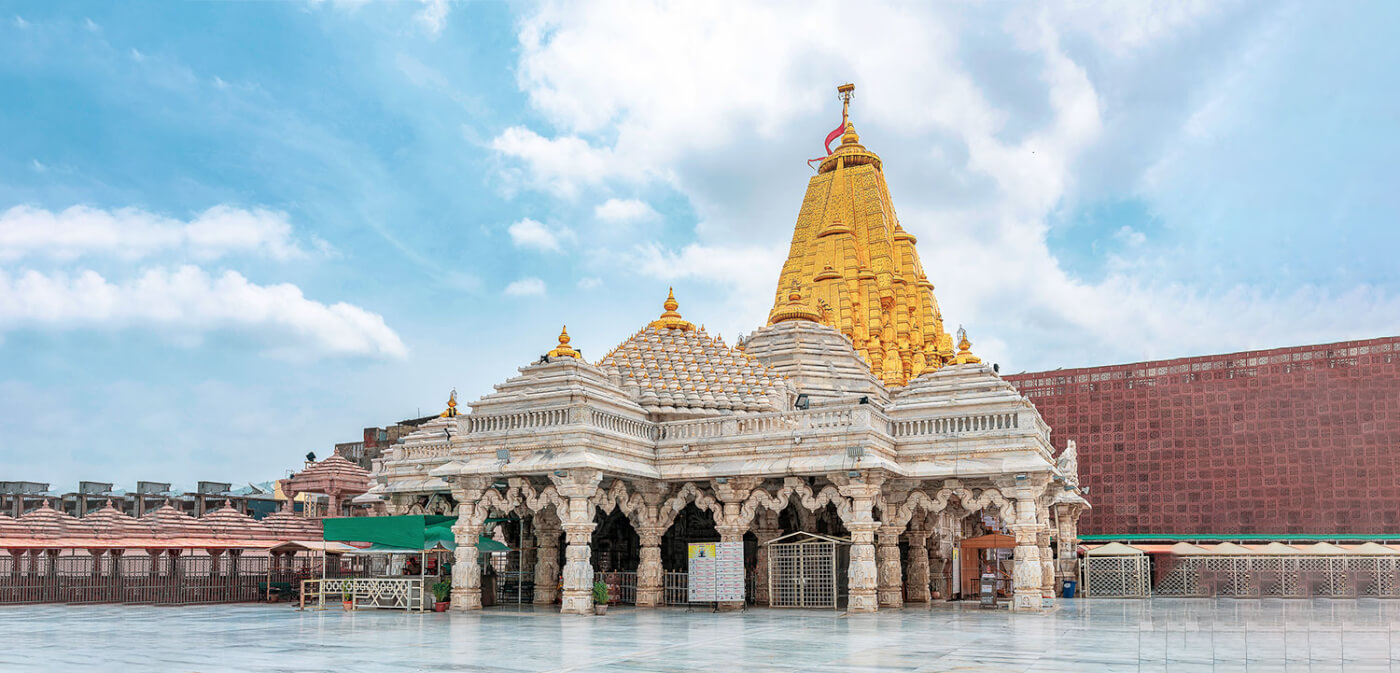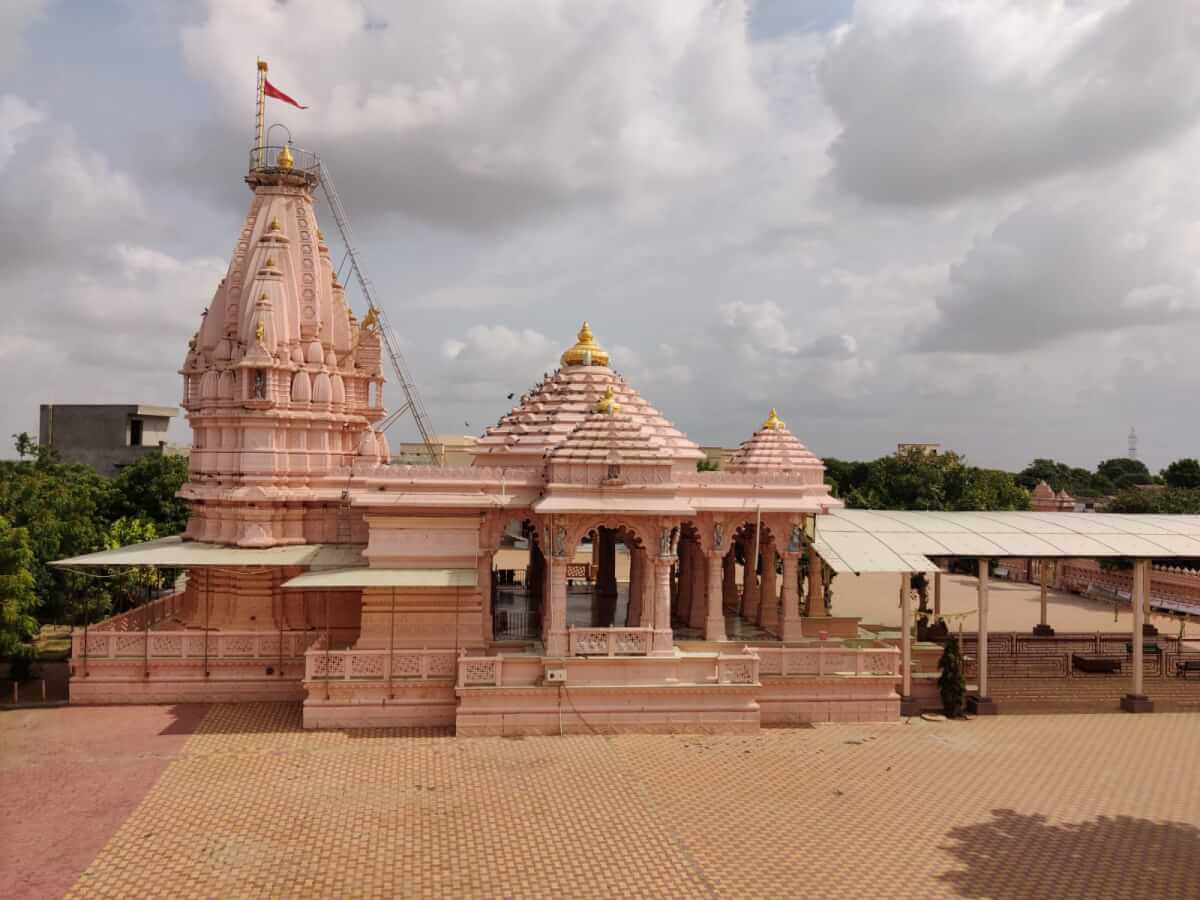- Home
- Holiday Ideas
-
-
- Choose Your Traveling Theme
-
- Adventure Tourism
-
- Cultural Tourism
-
- Tour Packages
-
-
- Packages by State
-
- Holidays by Interest
-
- Popular Tour Packages
-
- Fair And Festivals
-
- Ayurveda And Yoga
-
- Offers
-
- Destinations
-
Patan
(Treasure of History and Spirituality)
Patan
With an upscale history, vibrant culture, beautiful architecture and a powerful tradition of folks art, Patan in Gujarat, is one among the foremost popular tourist attractions of the state. Home to the UNESCO World Heritage Site of Rani-ki-vav, an exquisite stepwell, Patan has many legendary monuments to its credit. the town also holds dear its various Hindu and Jain temples and mosques, which boast a number of the best architectural sorts of their time. In fact, Patan is believed to possess mosques that are even older than the Muslim heritage buildings of Ahmedabad! the town is additionally a shopper’s delight because the renowned Patola sarees and Mashru fabrics are woven by local families here.
...Founded by the primary ruler of the Chavda dynasty, Vanraj Chavda, Patan wont to be referred to as Anahilvada Patan, inspired by the king’s friend’s name – Anhil Bharvad. It flourished because the capital of Gujarat between 746 and 1411, for around 650 years. After the Chavda, the Solanki and Vaghela dynasties also ruled over Patan. Trade, learning and architecture were at their peak during the Solanki rule from 942 to 1244.
Read MoreHow to get there
By Air
Ahmedabad Airport, about 125 km away from Patan, is the nearest airport. There are several flights from this airport to other cities of Gujarat as well as the rest of India.
By Road
National and state highways connect Patan to the rest of the country.
Rail
Patan is well-connected to all cities of the country. It is part of the Western Railways. From Ahmedabad, one can get several local and express trains to this city.
Attractions

Vadnagar
Vadnagar may be a village that dates back to the 7th century and is home to a Buddhist monastery that was built somewhere between the 2nd and 7th century AD. the favored monastery is understood for its stupas and also has an open central courtyard. Nine cells constructed round the monastery were raised in such a fashion that they created a pattern resembling the swastika, a holy Hindu symbol. Vadnagar is additionally known for its beautiful torans or arches. Built of red and yellow sandstone and standing at a height of 40 ft, Kirti Toran is that the hottest .
The village finds a mention within the travelogues of Chinese traveller, Hiuen Tsang, who had arrived in India during the 7th century. it's also been mentioned within the Puranas, ancient Hindu texts. Vadnagar is that the birthplace of the Prime Minister of India, Narendra Modi.
Bindu Sarovar , Matru Tarpan Place , Siddhpur
Sidhpur, also Siddhpur, is found of the banks of River Saraswati. Located within the Patan district, it’s the headquarters of the Siddhpur taluka. The town may be a revered site dotted with temples, kunds, ashrams and other sacred structures. The Bindu Sarovar is an ancient stepwell located within the Matru Tarpan Place here. it’s one among five most holy and ancient lakes in India. The sarovar is usually visited by people that want to perform the last rites of their mothers. Bindu Sarovar is one among the foremost flocked spots for doing “Pind daan”, a Hindu practice which is completed to make sure that the ancestors rest in peace. consistent with Hindu tradition, Siddhpur, also referred to as Matrugaya Tirth is legendary as an area where a son can repay his debt towards his mother.


Shri Parsvanath Temple Shankeshwar
The Shankeshwar town in Patan district is home to the Shankeshwar Jain Temple. Dedicated to Lord Parshwanath, it’s a crucial site for Jain pilgrims. Built by Sajjan Shah on the banks of Rupen river, the Shankeshwar Jain Temple is once said to possess nearly 52 idols. The temple is flocked by thousands of pilgrims on the 10th day of the Hindu calender month of Poush when devotees observe a two-day long fast. an identical fast is additionally observed by pilgrims during the month of Diwali. The temple’s most visited attraction is that the idol of Lord Shankeshwar called Mulnayak, that stands at a height of nearly 182 cm.
Rudra Mahalay
Another popular temple in Siddhpur is that the Rudra Mahalaya Temple, also referred to as the Rudramal Temple. This temple was inbuilt the 10th century by king Mularaja. consistent with legends, it had been probably reconstructed by Siddharaja Jayasimha within the 12th century. The temple is claimed to be the primary and largest Chalukyan temple. A multi-storeyed structure, it’s 11 subsidiary shrines that are dedicated to Ekadasa Rudras. Excavations have revealed a couple of of those subsidiary shrines, a torana, two porches and 4 pillars of the most temple kapilli. Alongside were found beautifully carved gigantic columns, huge architraves and torana arches. The pillars and therefore the toran stand because the remains of the temple today. the flowery and detailed carvings on them are testament to the rich past of the rulers of Siddhpur.


Jain Temples
Patan wont to be a really important site for Jains during the Solanki rule (950-1300 CE), who built several beautiful temples within the area. the most important group of temples, comprising over 100 structures, is that the Panchasara Parshvanath Jain Derasar, which is distinguished by its typical architecture of white marble floors and fine stone carvings. Among them, the Kapur Mahetano Pado is that the hottest , known for its beautiful wooden interiors.
Legend has it that a stimulating observation by the temples' master builder, Uda Mehta, changed the way Jain temples of Patan were built. One night, Mehta saw a mouse carrying a burning candle, which made him realise that even a minor mishap could lead on to a serious fire and burn down the whole temple. From then on, Jain temples were never an equivalent again. Stone was chosen because the preferred material for construction and splendid structures were erected that leave one spellbound with their intricately-carved patterns.
Wild Ass Sanctuary , Kodha
The only home of the ass in India, this sanctuary is situated within the area called the small Rann of Kutch. Locally called ghudkhar, the Indian ass is understood for a dark stripe along its back. The sanctuary is home to around 3,000 ass . thanks to its location within the Gulf of Kutch, which is on the flyway of the many birds, the sanctuary is a crucial site for birds to feed and breed in. About 75,000 birds nest here annually, including those from Egypt, Siberia, Europe, Iran, and Iraq.
Other fauna found within the sanctuary include 32 mammals like chinkara (Indian gazelle), two sorts of Rommel (Indian and white-footed), jackals, caracals, nilgais (the largest antelope of Asia), Indian wolves, blackbucks, and striped hyenas. The place is additionally home to migratory birds including coursers, stoneplovers, shrikes, ducks, geese, ibis, spoonbills, godwits, stints, sandpipers, shanks, moorhens, saras cranes, flamingos and pelicans. About 93 species of invertebrates are often found here including crustaceans, insects, molluscs, spiders, annelids and zoo planktons.
The sanctuary is sprawled over a neighborhood of 5,000 sq km and covers portions of cities including Sundernagar, Rajkot, Patan, Banaskantha and Kutch district. the simplest time to go to the place is between October and November.
There are many tribes within the sanctuary and among them the rabaris and therefore the bharwas have a sizeable population. choose a jeep safari if you would like to explore the sanctuary. the small Rann also has the most important salt pans of India. A booming business today, salt farming is an ancient practice at these sites. History says that centuries ago this region was a neighborhood of the ocean , until an earthquake turned it into an arid land. Later, an area community called Agariyas (salt farmers) noticed that the land had water below the cracked hard ground. And also that this water had a high saline content, which was concentrated enough to supply salt. And hence, the business of extracting salt began.


Sahastra ling Talav
Also referred to as Sahastra linga Tank or Sahasra linga Talav, this man-made tank has been built on the Durlabh Sarovar (lake). Constructed within the medieval times, it had been commissioned by the Solanki or Chaulukya dynasty. The tank is among the most important waterfront constructions made during the Solanki period in 1084. it’s a fine example of engineering of that point , and one would be left in awe of the method by which water was taken from River Saraswati. One can see how the channels were cleverly carved into stone inlets, to permit the water to gather then flow into the tank. The Sahastra king, Talav, is additionally said to possess inbuilt natural filtration to wash the water!
The reservoir seems like a piece of art as intricate carvings of deities grace its walls and columns. The monument is protected by the Archaeological Survey of India (ASI) today.
Ambaji
The grand temple of Ambaji is that the principal shrine of Goddess Amba, who is claimed to be an avatar of Goddess Durga. it’s among the 51 shaktipeethas (devotional shrines where the severed body parts of Goddess Shakti fell) of Hindus. Made in white marble, the temple may be a beautiful structure built by the Nagar Brahmins. An open square, called chachar chowk, surrounds the temple and it’s the location of havans (ceremonial prayers). The sanctum sanctorum may be a niche within the wall, called gokh, and has an inscription of Viso Yantra – a Vedic text about sacred geometry. Grand silver-plated doors welcome devotees into the inner sanctum. The temple has no idols and therefore the priests decorate the inscription to resemble the idol of a goddess from afar. A visit to the temple makes for a pleasant short ride from Rajasthan’s famous hill station, Mount Abu.


Varana Temple
Located in Varana village of Sami town, the Varana Temple, also called the Shri Khodiyar Mataji Temple, features a 100-year-old history. once you visit the temple, you’ll encounter a newly designed shrine with amazing accommodation facilities. The temple is devoted to Goddess Khodiyar, who is worshipped by members of the Charan community of Gujarat. The goddess is claimed to be a warrior deity who was born in 700 AD. Her temples are found everywhere Gujarat, Rajasthan and Mumbai. A fun fair is organised at the temple, per annum during the Hindu calender month of Magh. Varana village lies on the Mehsana-Radhanpur expressway . it’s 45 km faraway from Patan. Residents of the village are mostly involved in growing crops and vegetables for a living.
Rani ki Vav
Rani-ki-vav or the Queen’s Stepwell, is one among the various UNESCO World Heritage Sites that the state of Gujarat is home to. Situated on the banks of Saraswati river, this stunning architectural marvel was constructed by Rani Udayamati within the memory of her husband, king Bhima I, of the Chaulukya or Solanki dynasty (950-1300 CE).
A fine specimen of the Maru-Gurjara sort of architecture, UNESCO describes the stepwell together which displays “height of craftsmen’s ability in stepwell construction”. it’s been designed as an inverted temple and is split into seven levels interconnected with stairs that boast sculpted panels of unmatched artistic excellence. Out of the seven, the fourth panel is that the deepest and leads into an oblong tank, measuring 9.5 m by 9.4 m, with a depth of 23 m.
The structure houses a complete of 500 principle sculptures and over thousand minor ones, depicting religious, mythological and secular imagery. Most of the sculptures are dedicated to Lord Vishnu, in various forms like Lord Rama, Lord Krishna, Lord Narsimha, Lord Vaman etc.
The stepwell is believed to possess been buried underground due to a severe arrive the Saraswati river that flowed nearby. it had been resurrected after decades of painstaking restoration by the Archaeological Survey of India (ASI), ranging from late 1980s.

WANT TO RENT A CAR IN INDIA ?
Choose Your Traveling Theme

 TOUR BOOKING
TOUR BOOKING















